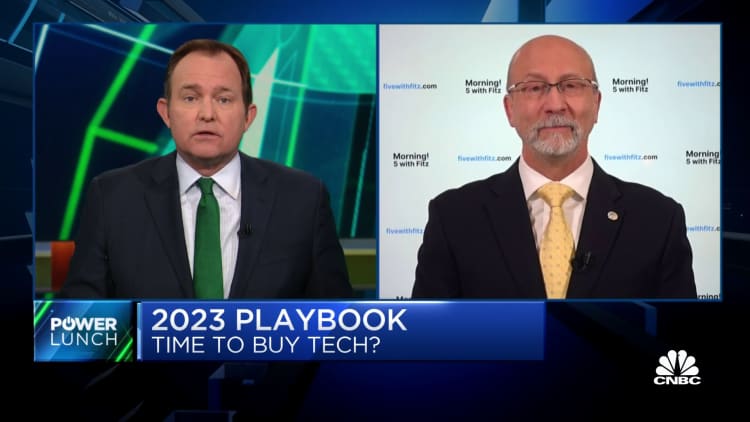[ad_1]
Intel CEO Pat Gelsinger stands in front of a cathedral in the German city of Magdeburg on Nov. 12, 2022. During his visit, Gelsinger also visited the planned site of the Intel Gigafactory in the Eulenberg industrial park. /dpa-Zentralbild/dpa (Photo by Peter Gercke/picture alliance via Getty Images)
Peter Gercke | Picture Alliance | Getty Images
Intel shares slid by as much as 7% in extended trading on Thursday after the chipmaker issued fourth-quarter results that failed to meet analysts’ estimates and gave a weaker-than-expected forecast.
Here’s how the company did:
Earnings: 10 cents per share, adjusted, vs. 20 cents per share as expected by analysts, according to Refinitiv.Revenue: $14.04 billion, vs. $14.45 billion as expected by analysts, according to Refinitiv.
Intel’s revenue declined 32% year over year in the quarter that ended Dec. 31, according to a statement. It’s the fourth consecutive quarter of falling sales as the market for personal computers retreats from the Covid boom.
The company recorded a $664 net loss, compared with a profit of $4.62 billion in the year-ago quarter.
Investors can expect more pain in the first quarter. Intel called for adjusted net loss of 15 cents per share on $10.5 billion to $11.5 billion in revenue. Analysts polled by Refinitiv had expected earnings of 24 cents per share and $13.93 billion in revenue.
“In 2023, we will continue to navigate the short-term challenges while striving to meet our long-term commitments, including delivering leadership products anchored on open and secure platforms, powered by at-scale manufacturing and supercharged by our incredible team,” Intel CEO Pat Gelsinger said in the statement. For at least the first half of the year, Intel will deal with “persistent economic headwinds,” the company said in a presentation on its results.
In the fourth quarter, Intel’s Client Computing Group, which includes PC chips, contributed $6.63 billion in revenue, down 36% and below the $7.68 billion consensus among analysts polled by StreetAccount. Gartner said the PC market shrank more sharply than any quarter since it began following the industry in the 1990s.
The Datacenter and AI segment, consisting of server chips, memory and field-programmable gate arrays, recorded $4.30 billion in revenue, down 33% but still more than the $4.17 billion consensus from StreetAccount.
Intel’s Network and Edge segment, containing networking products, posted $2.06 billion in revenue. That’s 1% less than in the year-ago quarter, and lower than the $2.26 billion StreetAccount consensus.
During the quarter, Mobileye, an autonomous driving hardware and software supplier that Intel acquired for $15.3 billion in 2017, debuted on the Nasdaq. Intel still controls most of the voting power of Mobileye’s common stock.
Intel said that in January it lengthened the useful life of some equipment from five years to eight years, which will boost 2023 gross profit by $2.6 billion. That move is separate from the $3 billion cost-savings plan for 2023 Intel announced in its earnings statement in October. Amazon and Microsoft have made similar accounting adjustments for their server and networking equipment in recent years, and IBM on Wednesday followed suit.
Intel stock has slid about 42% in the past year, while the S&P 500 index is off by 7% over the same period.
Executives will discuss the results with analysts on a conference call starting at 5 p.m. ET.
This is breaking news. Please check back for updates.
WATCH: AMD and Intel are priced like they’re going out of business, says Keith Fitz-Gerald

[ad_2]
Source link



